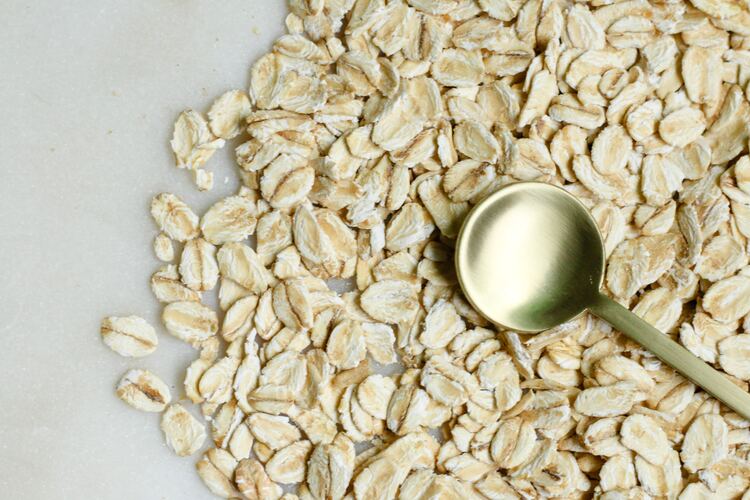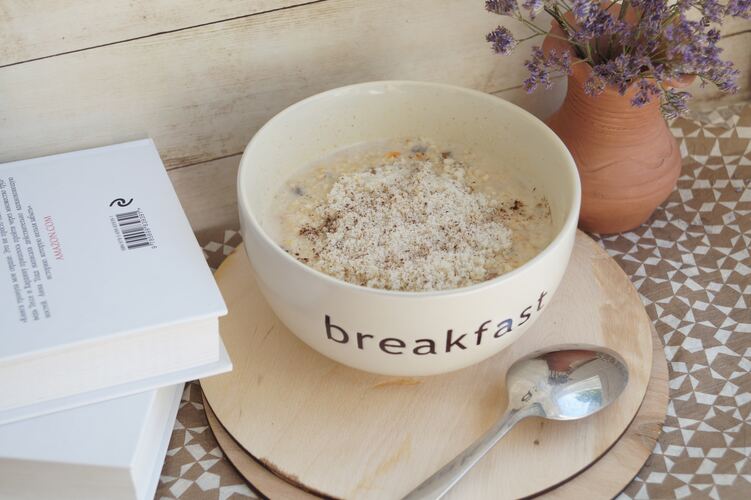
Oatmeal has been gaining popularity since around 2018 as a diet food. People have been saying, “If you replace your staple meal with oatmeal, you will lose weight!” but many people may be wondering if it is really possible to lose weight. In this article, we will introduce the benefits of eating oatmeal.
Suponsered by
Can I lose weight by eating oatmeal?
Eating oatmeal alone will not make you lose weight, but it can help reduce your daily calorie intake. Each serving of oatmeal contains 30 grams, which is about 105 kcal and about 18 grams of carbohydrates. On the other hand, a serving of white rice, a staple food on Japanese tables, contains 150 g of calories and 53.4 g of carbohydrates, more than twice as much as oatmeal. Since the sugar content is about three times higher, it is clear that oatmeal is more suitable than white rice for those who are restricting their carbohydrates. In addition, oatmeal contains a good balance of both insoluble and soluble dietary fiber, and since it expands in the stomach, even a small amount of oatmeal is very satisfying, and it also keeps the stomach full. This is why oatmeal is said to be suitable for weight loss.
| Staple Foods | Calories (per serving) | Carbohydrates (per serving) |
| Oatmeal (30g per serving) | Approx. 105kcal | about 18g |
| White rice (150g per serving) | Approx. 234kcal | Approx. 53.4g |
| Bread (60g per meal) | Approx. 158kcal | Approx. 26.6g |
| Pasta (100g per serving) | Approx. 140kcal | Approx. 31.3g |
However, the high fiber content of pasta means that it is not easy to digest, and eating too much of it can cause gastrointestinal distress and upset. Also, although the calories per serving are low, the simple taste of the food tends to be modified, and depending on how it is cooked, such as by adding ingredients or seasonings, it can be high in calories. The key to losing weight is to keep calorie intake low and to take in a good balance of nutrients, so do not go on an oatmeal-only diet.
What are the benefits of an oatmeal diet?
What benefits can I expect from eating oatmeal? Here are some typical benefits that make you want to try the oatmeal diet.
Advantages of the Oatmeal Diet (1) “It’s a low GI food, so it doesn’t raise blood sugar levels!”
Oatmeal is said to be a low-GI food; the GI value refers to the degree to which carbohydrates in foods are absorbed, and is calculated by measuring the concentration of sugar in the blood up to two hours after consumption; foods with a GI value of 70 or higher are generally defined as high GI foods, those with a GI value between 56 and 69 as medium GI foods, and those with a GI value below 55 as low GI foods. Basically, eating a food with a high GI value raises blood glucose levels all at once. The greater the range of the drop in blood glucose level, the more easily the brain feels hunger, so low-GI foods are recommended during dieting when the amount of food eaten is relatively small. Incidentally, white rice and wheat products such as udon noodles and bread are high-GI foods, while oatmeal and whole-particle products with low refining rates are low-GI foods.
Advantage of the oatmeal diet (2) “It improves bowel movements and regulates the intestinal tract.”
Another great point is that oatmeal is rich in dietary fiber. This is because people tend to eat less while dieting, and as a result, dietary fiber tends to be in short supply. Lack of fiber can cause constipation. Therefore, it is important to choose foods rich in dietary fiber, such as oatmeal, when dieting. Dietary fiber also feeds good bacteria and helps to regulate the intestinal environment. It is said that when the intestinal environment is regulated, people are less likely to gain weight, so oatmeal may have a significant effect on weight loss.
How is the oatmeal diet done?
The oatmeal diet is a diet in which you replace your regular staple food with oatmeal. At first, one meal or snack can be replaced with oatmeal, and when one becomes accustomed to it, it is easy to continue the diet by replacing all the meals in a day. Especially effective is replacing breakfast with oatmeal, as the “beta-glucan” in oatmeal suppresses the rise in blood glucose levels. It is also good to eat oatmeal when you are hungry, and topping it with fruit or yogurt is also recommended because it contains fewer calories than chocolate or snacks.
2/2GO TO NEXT PAGE


















![The Chicest Way to Wear a Gray Suit [2023 Newest].](https://otokomaeken.com/wp-content/uploads/2020/02/1-8-630x331.jpg)











![6 self-weight menus for leg training! Effective training for toning the lower body [ supervised by a professional ].](https://otokomaeken.com/wp-content/uploads/2023/03/2232-115x60.jpg)